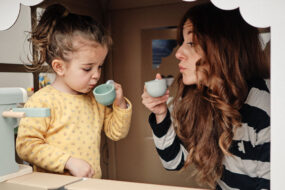Don’t eat that! 7 common plants that are toxic to your pet
Did you know there are dangers lurking in your garden? Watch out for these common plants that are toxic to pets, and learn how to spot the signs of poisoning.
Whether you’re sprucing up your garden or splurging on new houseplants for the holidays, it pays to be mindful that certain plants can be poisonous for pets.
So, before you dig out your spade and trowel, check this list of toxic plants to help keep your furry friends safe.
Which plants are toxic to pets?
Unfortunately, there are a number of plants that can be poisonous for your four-pawed pals.
Dogs, in particular, are more likely to be attracted to the fruit and flowers of toxic plants and ingest something they shouldn’t, poisons specialist Pooja Mehta, of the Australian Animal Poisons Centre, says.
“Younger animals are also considered higher risk, with approximately 30 per cent of all plant exposures involving animals less than one year old,” Pooja says.
Here are some of the most commonly loved plants that can be toxic to pets:
Lilies
Cat owners, beware! While lilies can be harmful to dogs, these popular flowering plants are extremely toxic to felines.
“All parts of the lily plant from the Lilium and Hemerocallis families are highly toxic to cats, and there needs to be zero exposure to these plants,” VetChat founder Dr Claire Jenkins says.
Even ingesting a small piece of the plant or its pollen can lead to kidney failure in cats.
Rhubarb
A kitchen favourite, rhubarb stalks are commonly used in baking and to make desserts.
The leaves of the plant, however, contain high amounts of oxalic acid which can be harmful to animals, including cats and dogs, when chewed or swallowed.
Oleander
Oleander is an evergreen shrub or small tree with dark green leaves and slightly fragrant flowers in pink, white or red.
The plant contains several toxins, including cardiac glycosides, which can cause a range of gastrointestinal and cardiac symptoms in your pet.
All of its parts – stems, leaves, blooms, roots, seeds and sap – are toxic to cats and dogs.
Hydrangea
With big, showy blooms in shades of blue, pink, white and purple, hydrangeas are simply beautiful.
But this common plant can be harmful to cats and dogs – its flowers, leaves and stalks all contain cyanogenic glycoside, a toxin that can cause gastrointestinal symptoms when ingested.
Tulip
Their colourful, cup-shaped blooms make tulips one of the most popular garden flowers.
While nibbling on any part of the plant could make your cat or dog sick, the bulb is the most toxic as it contains the highest concentration of toxic glycosides known as tulipanin A and B.
Fortunately, in most cases, the effects of tulip toxicity are mild.
Daffodil
Unfortunately, cheery daffodils and pets aren’t a safe combination.
Eating the petals, leaves, stems or bulbs of the plant can make your dog or cat sick due to the presence of a toxic chemical called lycorine.
Rhododendron
The toxic element grayanotoxin may induce a range of symptoms in your cat or dog, such as digestive upset, hypersalivation, vomiting, weakness, incoordination, paralysis of the limbs.
What are the symptoms of plant toxicity in pets?
If your pet has eaten something it shouldn’t have you may notice symptoms including:
- Low energy
- Vomiting
- Diarrhoea
- Struggling to breathe
- Collapse
- Drooling
- Loss of appetite
- Tremors/seizures
However, Dr Jenkins says symptoms may vary depending on toxin type, the amount eaten and each pet’s susceptibility.
“There are some cases, such as lily ingestion in cats, where signs may not be seen until several hours later,” Dr Jenkins says.
What to do if you suspect plant toxicity in your pet
Pooja says to seek early advice from a professional as delaying treatment can result in irreversible effects or poor prognosis.
“The vast majority of cases will only require simple first aid measures and home observation,” Pooja says.
“Advice is highly dependent on the species of animal, the plant ingested, the part of the plant, amount ingested and any underlying medical conditions.”
Dr Jenkins advises preventative measures for pet owners to decrease the chance of toxic plant ingestion.
“I would recommend doing a survey of all house and garden plants and checking them against a more comprehensive list of both toxic and non-toxic plants for cats and dogs,” Dr Jenkins says.
If your pet does require medical attention, Agriculture Victoria advises bringing a piece of the suspected plant with you to the clinic.
The Animal Poisons Centre provides free advice to pet owners and can be reached on 1300 869 738 (AU) or 0800 869 738 (NZ).
More on pet health:
- Common Christmas foods that are toxic for pets
- The household items your furry friend needs to avoid
- Pets can get dementia too – here’s what to know
- How to help pets cope with fireworks and thunder
Written by Hollie Mitchell & Monique Gill.





